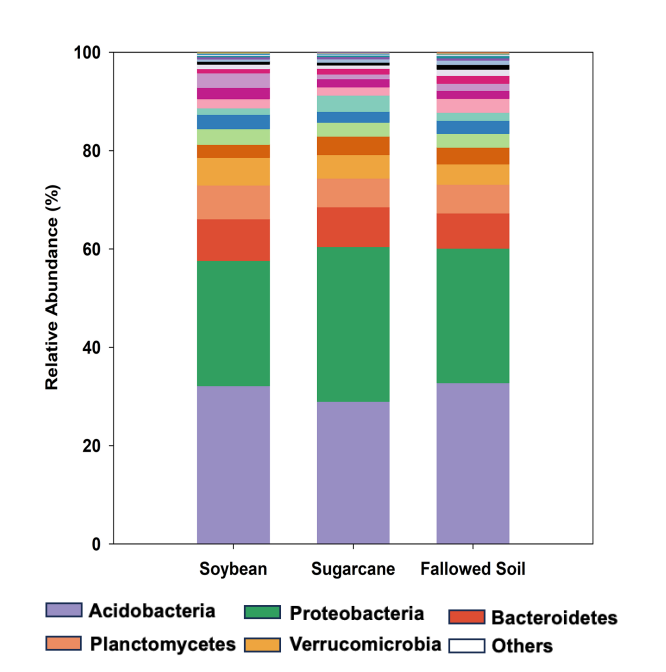Immediate Impacts of Soybean Cover Crop on Bacterial Community Composition and Diversity in Soil Under Long-Term Saccharum Monoculture
Themes: Feedstock Production
Keywords: Field Data, Genomics
Citation
Mula-Michel, H.P., White, P.M., Hale, A.L. Aug. 22, 2023. Data from: “Immediate Impacts of Soybean Cover Crop on Bacterial Community Composition and Diversity in Soil under Long-Term Saccharum Monoculture.” NCBI – BioProject.
Overview

Saccharum yield decline results from long-term monoculture practices. Changes in cropping management can improve soil health and productivity. Below-ground bacterial community diversity and composition across soybean (Glycine max (L.) Merr) cover crop, Saccharum monoculture (30+ year) and fallowed soil were determined. Near full length (~1,400 base pairs) of 16S rRNA gene sequences were extracted from the rhizospheres of sugarcane and soybean and fallowed soil were compared. Higher soil bacterial diversity was observed in the soybean cover crop than sugarcane monoculture across all measured indices (observed operationational taxonomic units, Chao1, Shannon, reciprocal Simpson and Jackknife). Acidocateria, Proteobacteria, Bacteroidetes and Planctomycetes were the most abundant bacterial phyla across the treatments. Indicator species analysis identified nine indicator phyla. Planctomycetes, Armatimonadetes and candidate phylum FBP were associated with soybean; Proteobacteria and Firmicutes were linked with sugarcane and Gemmatimonadetes, Nitrospirae, Rokubacteria and unclassified bacteria were associated with fallowed soil. Non-metric multidimensional scaling analysis showed distinct groupings of bacterial operational taxonomic units (97% identity) according to management system (soybean, sugarcane or fallow) indicating compositional differences among treatments. This is confirmed by the results of the multi-response permutation procedures (A = 0.541, p = 0.00045716). No correlation between soil parameters and bacterial community structure was observed according to Mantel test (r = 211865, p = 0.14). Use of soybean cover-crop fostered bacterial diversity and altered community structure. This indicates cover crops could have a restorative effect and potentially promote sustainability in long-term Saccharum production systems.
Data
NCBI – BioProject: Includes nucleotide sequence data
- Soil parameters
- Soil chemistry properties
- Phylum level taxa